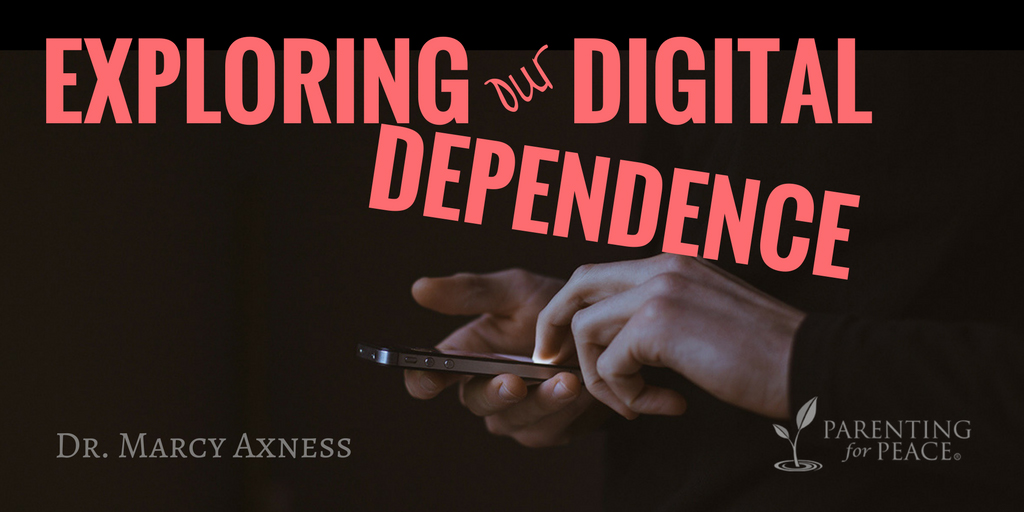
![]()
TWO PITFALLS FOR PARENTS
“We all understand the joys of our always-wired world — the connections, the validations, the laughs, the porn, the info. I don’t want to deny any of them here. But we are only beginning to get our minds around the costs, if we are even prepared to accept that there are costs.
“For the subtle snare of this new technology is that it lulls us into the belief that there are no downsides. It’s all just more of everything. Online life is simply layered on top of offline life. We can meet in person and text beforehand. We can eat together while checking our feeds.”
This from Andrew Sullivan in his New York Magazine article, “I Used to Be a Human Being,” chronicling his web addiction, recovery and reflections. The piece is extraordinary… and extraordinarily long. So, I aim to tease out excerpts from it to enrich the Wired Wednesday series.
Today, two aspects of digital dependence of particular concern for parents, related to attention deficits: these can have a deep and direct impact upon your developing child’s brain circuitry.
Digital Dependence and Attention Deficits
Andrew Sullivan:
“But of course, as I had discovered in my blogging years, the family that is eating together while simultaneously on their phones is not actually together. They are, in [writer Sherry] Turkle’s formulation, “alone together.” You are where your attention is. If you’re watching a football game with your son while also texting a friend, you’re not fully with your child — and he knows it. Truly being with another person means being experientially with them, picking up countless tiny signals from the eyes and voice and body language and context, and reacting, often unconsciously, to every nuance. These are our deepest social skills, which have been honed through the aeons. They are what make us distinctively human.”
Gabor Maté in his extraordinary book Scattered: How Attention Deficit Disorder Originates and What You Can Do About It, traces the connection between being present and attending — which he proposes is a fundamental, active form of loving. To attend to someone is to be present for them, attuned and responsive to exactly the kinds of social cues to which Sullivan refers.
Why does this matter all the more for parents? Because this is all about right hemisphere brain development and your child’s future success in pretty much every human endeavor! Through the weeks, months and years of attuned, responsive relational encounters between an infant / toddler / preschooler and a parent, the child’s self-regulating brain systems wire up… to mirror the relational style of the adult!
It is only with the presence of a healthily developed right hemisphere that we are able to be with another — to be present in the full and complete way that is needed by a child. (We all know that feeling of talking to someone who just isn’t quite fully with us — as in the classic party conversation with someone whose eyes are darting around the room looking for who might be more interesting!)
Thus, suggests Maté, a child displaying the kinds of impaired self-regulating abilities that often lead to an ADD/ADHD diagnosis, for example, has suffered a deficit of attention when it was needed — in the early years. He concludes his book by pointing out that “The origins of the word attend is the Latin tendere, ‘to stretch.’ Attend means to extend, to extend, to stretch toward.
Maté concludes, “If we can actively love, there will be no attention deficit and no disorder.”
Digital Superficiality
I wrote earlier that one “subtle snare” of our digital dependence is that it offers us a digital imitation of reality, a pitfall whose human costs Sullivan deftly traces:
“By rapidly substituting virtual reality for reality, we are diminishing the scope of this interaction even as we multiply the number of people with whom we interact. We remove or drastically filter all the information we might get by being with another person. We reduce them to some outlines — a Facebook “friend,” an Instagram photo, a text message — in a controlled and sequestered world that exists largely free of the sudden eruptions or encumbrances of actual human interaction. We become each other’s “contacts,” efficient shadows of ourselves.”
On a visit to Stanford University, noted child psychologist David Elkind noticed that the architecture students – we’re talking the brightest of the bright! – needed to play with erector sets in class. Why? Because they hadn’t experienced enough hands-on play as children, and as a result, the sophisticated computer drafting technologies weren’t serving them. These play-deprived young adults didn’t have a real-world, three-dimensional frame of reference for the two-dimensional images on the screen. (See my Digital Imitation of Life post for a bit more on this.)
I see this as a deep and dangerous pitfall for a child who spends way more time in two dimensions on a screen than in three dimensions IRL (in real life). Because – as with toxicity tolerances of certain pesticides, etc. – it isn’t merely about quantity of exposure, but also about timing of exposure: an hour in two dimensions has a very different impact on a rapidly-developing brain whose social intelligence circuitry is yet incomplete, highly malleable, and wiring up in response to real-time experiences (be they 3D-human or 2D-digital), than it does on an adult whose social intelligence neural maps are long established and far less malleable. (Though adults’ brains definitely are vulnerable to rewiring in response to digital dependence! A post for another time…)
Sullivan suggests that
“…we are not completely helpless in this newly distracted era. We can, one senses, begin to balance it out, to relearn what we have so witlessly discarded…”
This beginning to balance it out is one of my main objectives for us together in this digital dependence exploration! And so on the two points highlighted in today’s post, two simple invitations for relearning:
- When you are with another – especially your child – attend, in the fullest sense of that word: be present to take everything in, and to respond
- Build balance and moderation into your child’s digital diet, making sure that his or her on-screen time is a small fraction of the time spent in hands-on, eyes-on, ears-on real-world engagement. (I’ll be delving in more detail into ideas for “dietary” guidelines on another Wired Wednesday, but for now a good start is to check out my “2 Great Guidelines for Mastery” of last week.)
To read more about attachment neurobiology and Gabor Maté, see “Presence & Attachment: ADHD Treatment?“
![]()
![]()
![]()
Whether you’re curious, captivated or concerned about our digital dependence and device devotion, join me on (most) Wednesdays so we can explore it together. (Sign up here if you want to be sure not to miss anything!) ….. ….. ![]()
Stay in the Wired Wednesdays Loop:
I’ll Notify You About New Posts
![]()
Tags: ADD, adhd, attention-deficit, digital-dependence, Gabor Mate, handheld devices, smartphones, technology


